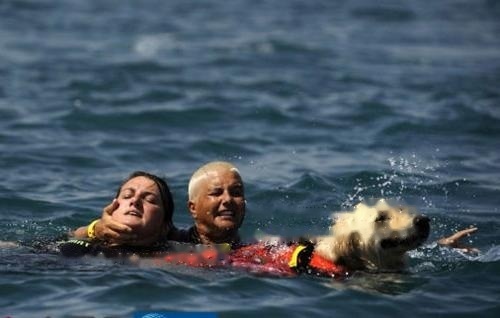In ancient and modern times, at home and abroad, there are many records of righteous dog savior, yellow dog breaking through, and taking revenge for the Lord. Today, dogs are often used in a variety of life-saving jobs, faithfully serving humans. There are mountain life-saving pills that search for passengers in distress in the ice and snow; there are dogs who sacrifice their lives in the raging fire to search for young children; there are rescue dogs who desperately rescue the drowning in the seaside baths; Bravely fighting venomous snakes beasts, loyal and good dogs who protect their owners from disasters; some of them sniff out the exact location of buried living people in the collapsed gravel and rubble, and deliver food and oxygen to them , letter, and make it meet the rescue dog who survived. In short, the use of dogs for lifesaving by humans has become more and more widespread. The methods of lifesaving training also vary depending on the application.

Suitable for age: 8 months-0 months
Training goal: training According to the command or call for help, the dog excitedly and actively exerts its special functions to assist people in rescue work independently or in part. Dogs used for life-saving training must feel sensitive, brave, tenacious, docile and flexible, have long-lasting endurance, and have a high search desire for cooperation and cooperation.
Applicable dog breeds: working dog|St. Bernard|Newfoundland
Venue: training ground
Equipment: professional life-saving equipment | lifebuoy | fire suits
Level: university (professional) - professional skills training
Training period: 60 minutes * 40 times
The first step: The training of the snow rescue dog first cultivates the dog's searching ability . Choose an open ice and snow mountain, the trainer and the trainer will bring the dog to the destination. The trainer will first tease the dog with food or items. After the dog is excited, the trainer will take the food or items and run away in front of the dog. hide. Then, the trainer issued a search password to it, instructing the dog to search the ground. When the dog found the trainer excitedly, the trainer immediately gave it food. At the same time, the trainer and the trainer gave it food. The dogs are enthusiastically encouraged and rewarded to form the impression that after finding a trainer, they can obtain delicious food and the favor of the trainer and the trainer. With such regular training, the dog's search enthusiasm will become higher and higher, and the interest will become more and more great.
Step 2: Rescue dog training in gravel and ruins The training method for rescue dogs in gravel and ruins is basically the same as the snow rescue training, except that the training ground Should be chosen among collapsed buildings or other rubble. When the dog finds a buried living person, it should bark and train the dog to bring rescue items such as food and oxygen to the victim when people cannot enter or leave, so as to avoid the threat of starvation and suffocation. , quietly waiting for rescue. Even in today's peaceful environment, a group of rescue dogs should be trained in cities for emergency rescue in various unforeseen events.
Step 3: The training of marine rescue dogs firstly trains the dogs to form conditioned reflexes to swimming commands, gestures or the cry for help of drowned. At first, the trainer pretended to be a drowning person and made a struggling cry for help in the water. The trainer gave the dog a swim password and waved to the drowning person. Immediately swim with it to the trainer, and when the trainer grabs the handle or the lifebuoy, let the dog swim to the shore, and the trainer and the dog will rescue the drowning person to the shore. When practicing, both the trainer and the trainer should sincerely reward the dog.
Step 4: The training of rescue dogs in fires Dogs used for rescue in fires are called fire dogs. At present, some countries in Western Europe have begun to train and use it, and have achieved good results. The fire dog mainly relies on its unique sense of smell and discernment to help firefighters quickly search for children who are hiding or fainted in the fire scene. Dogs used to save lives in fires must be bold, docile, brave, hard-working, and not afraid of flames. Training can be done in 2 phases. 1. Cultivation of basic abilities The basic abilities of rescue dogs in fires are mainly the training of searching for children in buildings, climbing heights, overcoming obstacles, and picking up valuables. For specific methods, please refer to the relevant chapters of this book. 2. The actual combat training mainly trains dogs to repeatedly enter and exit the burning building to search for hidden or fainted children. At the beginning of the training, only smoke was used to fill the entire building, and the trainer and the dog entered the search.
1. Snow rescue dogs must have good search and digging skills.
2. Dogs trained for life-saving training must feel sensitive, brave, tenacious, docile and flexible, with long-lasting endurance, and their desire to search is higher than that of cooperation and cooperation.
![[Dog Training 5] The training method of pet dog dining etiquette](/static/img/12192/12192_1.jpg)




